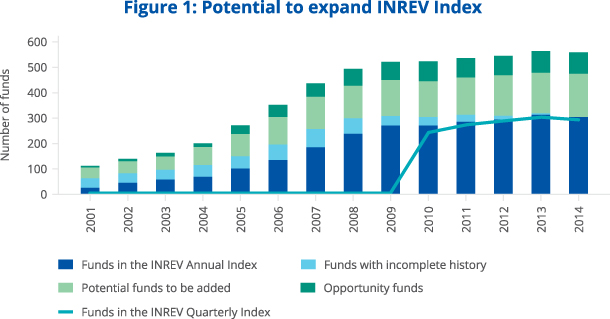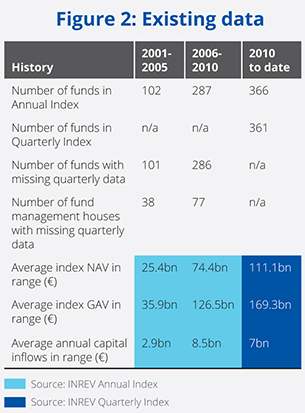Small step, giant leap
Efforts underway to expand history of INREV Index
Data has become increasingly important in all aspects of business, and the real estate industry is no exception. Businesses large and small are combining internal data with external data to measure and record their investment performance. A new initiative aims to further support this endeavour.
Robust indices are increasingly being used to support all aspects of the real estate investment process, from the very early stages of asset allocation, portfolio construction and investment strategy, to the portfolio monitoring stages of performance measurement, peer-to-peer and market comparison. However, the sources for external real estate data and real estate indices remain limited.
Access to market data has increased rapidly over the past decade, especially with the introduction of the INREV Annual and Quarterly fund indices, which have contributed significantly to the transparency and maturity of the European non-listed real estate industry. Yet, the need for greater transparency remains, and looking at the data history of the INREV indices there is still work to be done.
NUMBER OF FUNDS COULD MORE THAN DOUBLE
The vast majority of potential funds that could be added to the history of the INREV Quarterly Index are those that are currently covered in both the INREV Annual and the Quarterly Index, which comprises 303 and 292 funds respectively. In addition a significant number of funds - between 150 and 200 - are not covered in any index but are identified in the INREV Vehicles Universe and other sources.

The third area of potential lies in the addition of opportunity funds to the Index as INREV is currently working on the creation of an opportunity index, which covers an additional group of between 75 and 100 funds. The growth potential of the index is illustrated in Figure 1.
THE DATA CHALLENGE

Over the next few months the INREV Performance Measurement and Benchmarking Committee will liaise with fund managers as their support and effort is crucial in taking this small but important step in enhancing the history of the INREV Quarterly Index.
The publication of the INREV Quarterly Index dates back to the first quarter of 2010, and the aim of the project is to expand its history back to at least 2005 (or ideally to 2001 in order to match the time series of the INREV Annual Index). To minimise the required data the focus group will look into impact analysis and the possibilities of interpolation of some data points.
The project will focus specifically on the INREV Quarterly Index as the INREV Annual index is frozen and therefore cannot be amended historically. Data currently available is summarised in Figure 2.
THE PROJECT PLAN
A focus group within the INREV Performance Measurement and Benchmarking Committee is helping INREV to design a template to capture the necessary data fields to achieve this objective.
The group comprises members of INREV’s Performance Measurement and Benchmarking Committee: Stafford Biddulph, Head of Performance at Rockspring, UK and Rob Courtens, Consultant Real Estate Investments at Grontmij Capital Consultants, Netherlands, and they are supported by INREV’s Henri Vuong and Vitaliy Tonenchuk.
With the commitment of fund managers the European non-listed real estate industry will have a much improved and expanded INREV Index.
The template will define the ‘must-haves’ for ‘standard outputs’ and ‘nice-to-haves’ for ‘advanced outputs’, which will give the ability to slice and dice through the material covered by the Index, while being conscious of minimising the required effort for fund managers.
Gathering the historical data will take place before the end of the year to avoid interference with annual reporting at the beginning of 2016. The committee will advise fund managers on the required data in early October, and aims to present the results at the INREV 2016 Annual Conference in Vienna.
With the commitment of fund managers the European non-listed real estate industry will have a much-improved and expanded Index with which to analyse the market and measure performance. Transparency will be greatly improved, and it will open the doors for non-traditional real estate investors to access this market.








